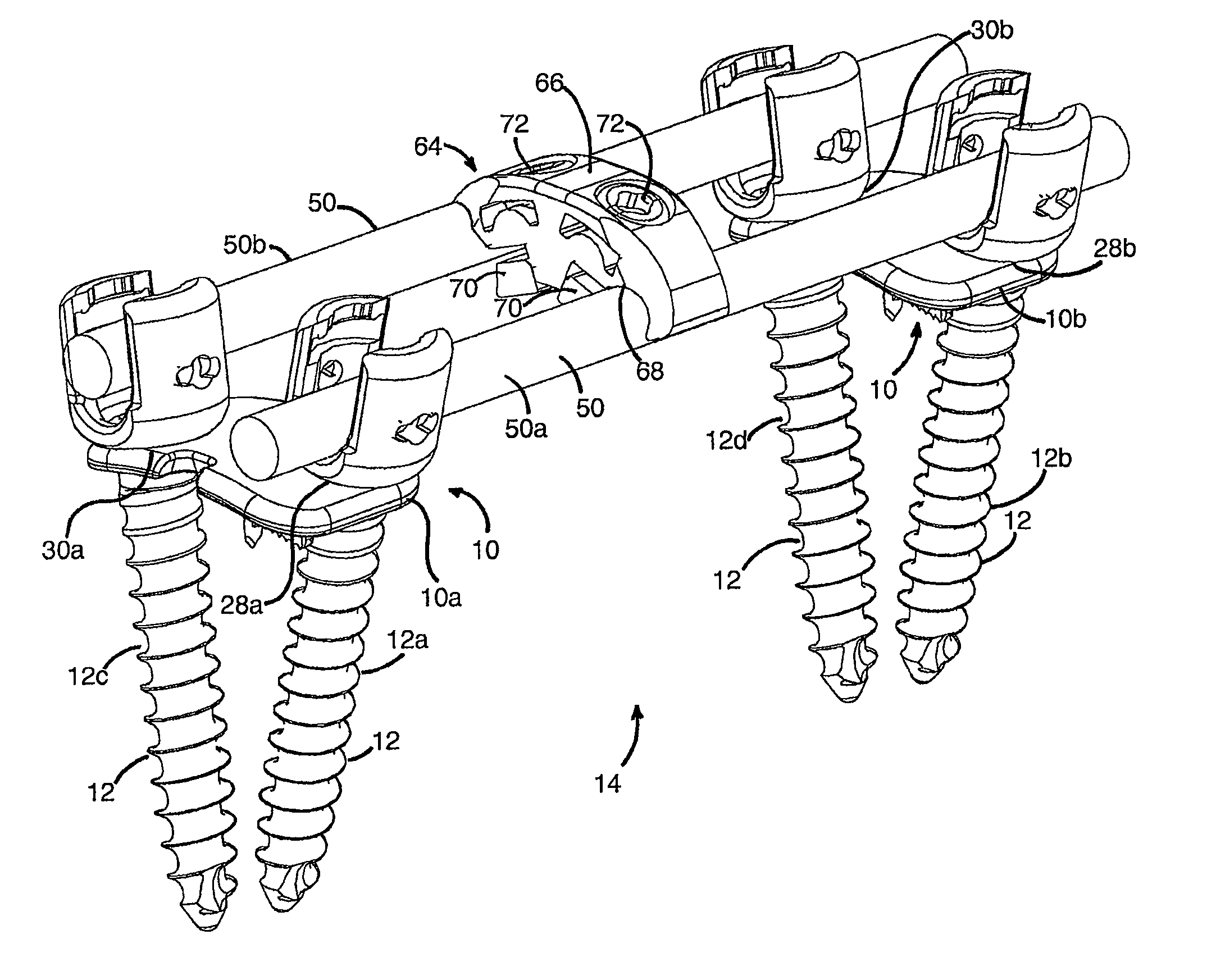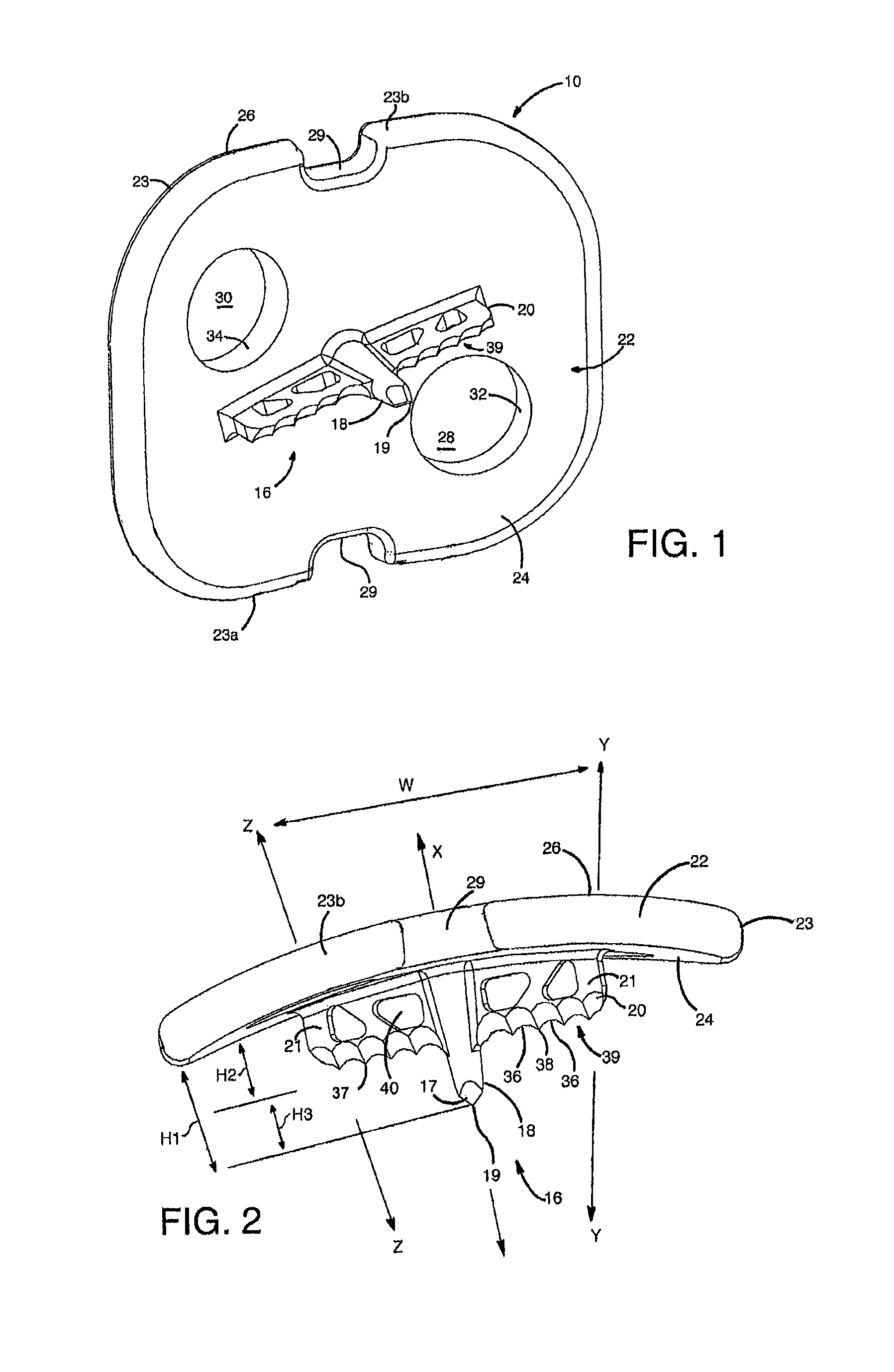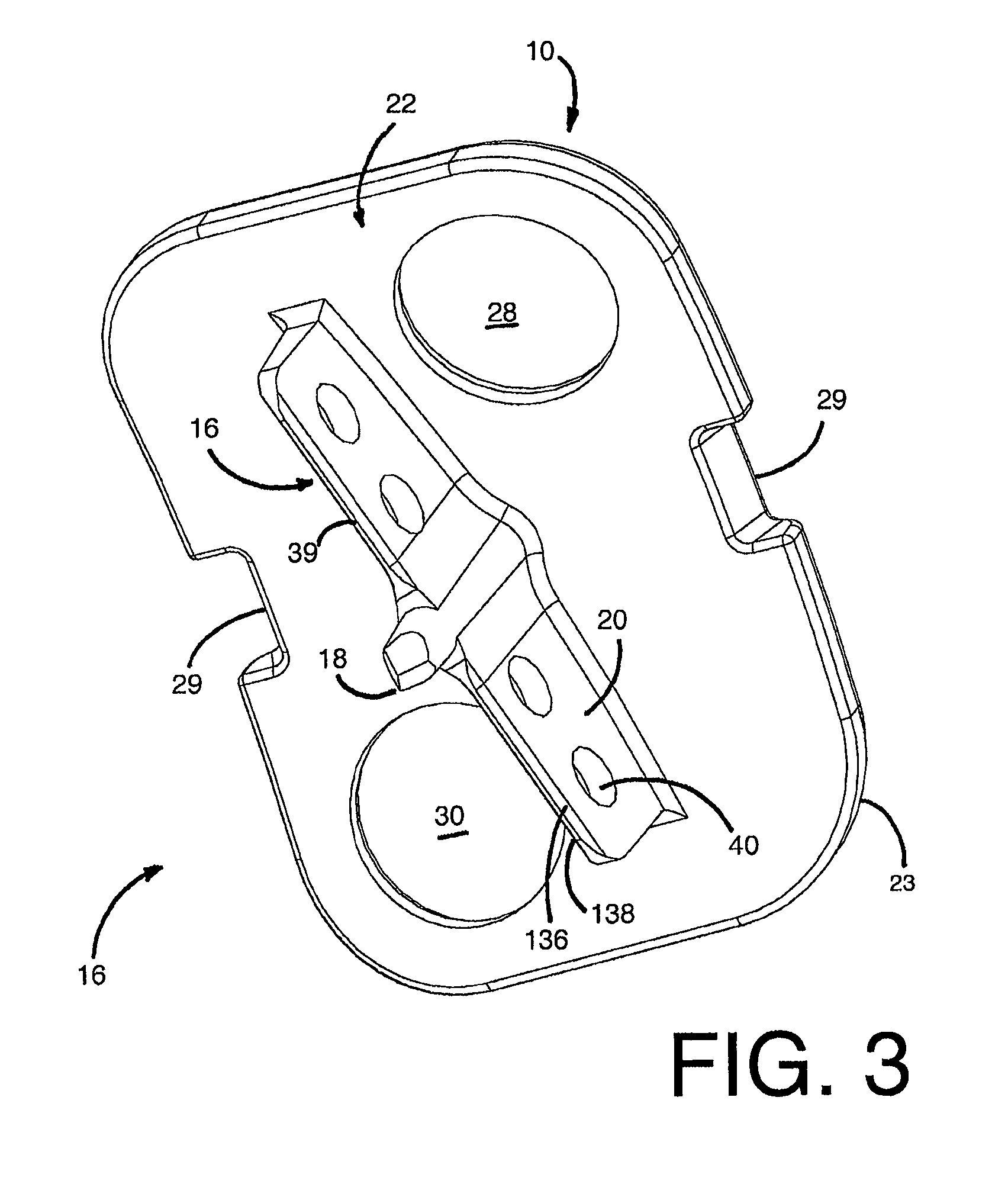Mounting devices for fixation devices and insertion instruments used therewith
a technology of fixing device and mounting device, which is applied in the field of bone implants, can solve the problems of weakening the connection, loosening and playing at the interface between the surface and bone material, and weakening the attachment to the bon
- Summary
- Abstract
- Description
- Claims
- Application Information
AI Technical Summary
Benefits of technology
Problems solved by technology
Method used
Image
Examples
Embodiment Construction
[0039]Referring to FIGS. 1-8, there is illustrated an exemplary mounting device 10 that is arranged and configured for being driven in a bone in order to support at least one, and preferably two, anchor members 12 as part of a stabilizing system 14. Preferably, the mounting device 10 is in the form of a vertebral cleat that is configured for being driven in a vertebral bone as part of a bone stabilization system to fix adjacent vertebrae relative to each other. The mounting device 10 includes a bone securing member 16 with at least one elongate spike portion 18 that permits rotation of the mounting device 10 relative to a bone surface when the spike portion 18 is partially driven into the bone so that a surgeon can orient the mounting device 10 into a final position on the bone. The securing member 16 also preferably includes an elongate keel portion 20 extending transverse to the spike 18 that hinders further rotation of the mounting device 10 when the spike portion 18 and the keel...
PUM
 Login to View More
Login to View More Abstract
Description
Claims
Application Information
 Login to View More
Login to View More - R&D
- Intellectual Property
- Life Sciences
- Materials
- Tech Scout
- Unparalleled Data Quality
- Higher Quality Content
- 60% Fewer Hallucinations
Browse by: Latest US Patents, China's latest patents, Technical Efficacy Thesaurus, Application Domain, Technology Topic, Popular Technical Reports.
© 2025 PatSnap. All rights reserved.Legal|Privacy policy|Modern Slavery Act Transparency Statement|Sitemap|About US| Contact US: help@patsnap.com



